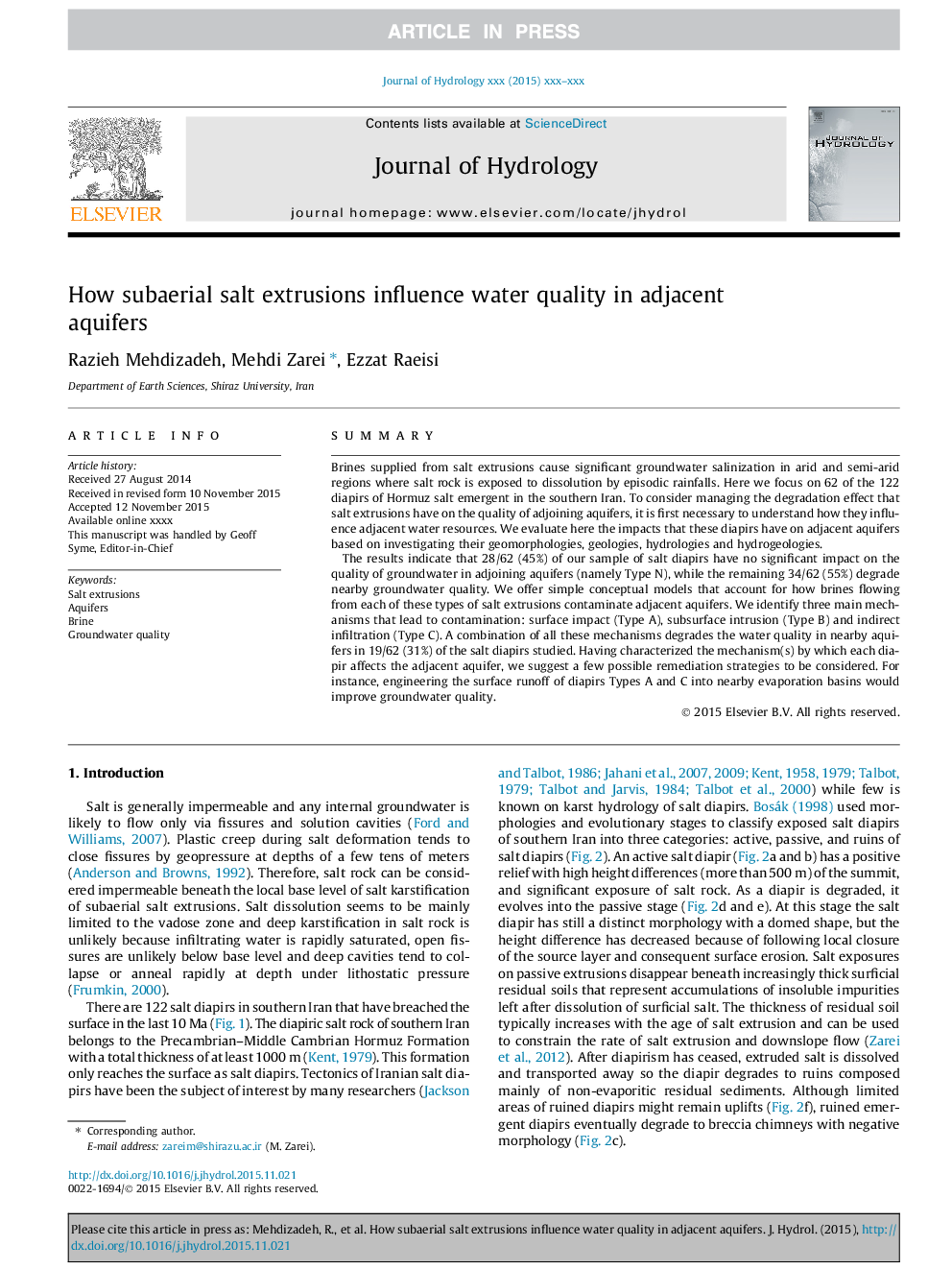| Article ID | Journal | Published Year | Pages | File Type |
|---|---|---|---|---|
| 6409890 | Journal of Hydrology | 2015 | 6 Pages |
Abstract
The results indicate that 28/62 (45%) of our sample of salt diapirs have no significant impact on the quality of groundwater in adjoining aquifers (namely Type N), while the remaining 34/62 (55%) degrade nearby groundwater quality. We offer simple conceptual models that account for how brines flowing from each of these types of salt extrusions contaminate adjacent aquifers. We identify three main mechanisms that lead to contamination: surface impact (Type A), subsurface intrusion (Type B) and indirect infiltration (Type C). A combination of all these mechanisms degrades the water quality in nearby aquifers in 19/62 (31%) of the salt diapirs studied. Having characterized the mechanism(s) by which each diapir affects the adjacent aquifer, we suggest a few possible remediation strategies to be considered. For instance, engineering the surface runoff of diapirs Types A and C into nearby evaporation basins would improve groundwater quality.
Keywords
Related Topics
Physical Sciences and Engineering
Earth and Planetary Sciences
Earth-Surface Processes
Authors
Razieh Mehdizadeh, Mehdi Zarei, Ezzat Raeisi,
